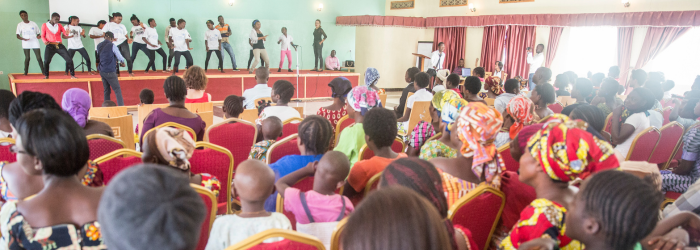Healing in Harmony music therapy program (HiH)
Written by: Darcy Ataman, Make Music Matter

Make Music Matter’s innovative Healing in Harmony music therapy program (HiH) is a unique form of group therapy that brings together trauma survivors with a local trained psychologist and local music producer to write, record, and professionally produce songs about their emotions and experiences. The process helps participants to devel-op potential for transformative change, while building self-esteem and re-establishing their sense of identity and agency. Centered on the belief that music can be an integral part of a community-driven, holistic healing model, the program can easily be adapted to serve the needs of its beneficiaries.
Make Music Matter (MMM) launched HiH at Panzi’s aftercare facility, Maison Dorcas, in 2015 to heal trauma of survivors of sexual violence. At the time, HiH had not been fully implemented apart from pilot periods in neighboring Rwanda. Potential donors and the NGO sector at large did not see the value of bringing music into an active con-flict zone as a therapeutic intervention. I wondered if I could integrate the program into a functional hospital system, specializing in traumatic events, than perhaps I could quantify and track our results along with our Theory of Change.
While that was my motivation for my first visit, I was not prepared to encounter the true reasons why MMM and I committed to becoming lifelong devotees in bolstering the psychosocial support pillar in Panzi’s Holistic Care Model. These moments came in three steadfast experiences that all occurred during my first visit on September 20th, 2011.
The first incident occurred as I walked through the hospital gates shortly after 6 am into the general courtyard. I entered a stunningly beautiful and transcendent musical per-formance with staff and patients alike, singing their morning prayers as once voice and setting positive intentions for their day. I knew in that moment that not only the HiH would be welcomed, but that there would not be a barrier in participation as melody and harmony seemed to exude out of every Congolese, just as involuntary as breath-ing in and out.
This second incident occurred when word disseminated throughout hospital grounds that this strange looking fellow with tattoos (me) was getting a tour. At one point a pa-tient and survivor of sexual violence approached me to tell her story as her physical wounds were healing. Paraphrasing she said, “every day I get up and make a choice, do I work in the mines (for the minerals contained in the gadgets we use daily) where one day I will surely get raped, or do I not make enough money that day to feed my children? What is my choice?” Shamefully, I did not and still do not have the answer but what struck me at the time was that she insisted on telling her story through song and dance because it was a way for her to express her emotions and story without re-traumatizing herself.
The third moment occurred near the end of that first day. As I continued to tour the facil-ity, I noticed babies and young children, somewhat unattended, throughout the hospi-tal grounds. This puzzled me at first. At one point, a toddler approached and gestured to be picked up. After doing so, the baby ended up falling asleep in my arms as I con-tinued my guided walkabout. Eventually it dawned on me that these are children born of rape. These babies are used as a strategy to keep communities destabilized so that international interests can extract the minerals that end up in the omnipresent devices of our lives. Tragically, these children have been rejected by their families and society for the memories they triggered and for what those triggers symbolize. I started to think about how many strikes against life this beautiful child had against him before even beginning; trauma passed down in utero by his mother, void of love and care and physical touch, no early education opportunities, and at that point he had not even seen the outside world past the hospital gates. Knowing our complicity behind such an acute example set me on a path to commit HiH as far into Panzi’s holistic care model as possible. Since then, I am happy to report that music and art can play a striking, sustainable and profound role in breaking these traumatic cycles. Below is an exam-ple of how the HiH program broke one of these cycles.
By the age of 15, Etoile (name changed to protect her identity) had two children born of rape from two different perpetrators and attacks. One child lived with her grandmother in her home village and one lived with Etoile at Panzi Hospital in the DRC while she was in the midst of both her physical and psychological healing journey. Just before Etoile entered our program, she told me that she would never love, touch, or care for this child as it too viscerally reminded her of the traumatic event. Instead, the surround-ing local community did their best to collectively tend to the child as without a mother’s love and touch the baby would statistically become a child soldier and perpetuate the cycle of violence against the most vulnerable, becoming an affront to our common hu-manity.
One day, as part of the Healing in Harmony program, Etoile participated in a communi-ty concert, joyfully singing. In an act of defiance, she took ownership of her story and the shame she felt. It signaled a reframing of her experience, alchemizing her pain into power and new dreams. Etoile became so emboldened by the crowd’s response to her performance that after finishing, she immediately walked off the stage straight to her baby sitting on the floor and picked him up for the first time ever. She has been giv-ing him love and affection ever since.
HiH continues to heal trauma throughout Eastern DRC in partnership with Panzi Hos-pital and Panzi Foundation DRC and advocates for the reduction of stigma for survi-vors through the music that program produces. Like with Etoile, we continue to have beautifully symbolic moments where one could witness the cycle and scourge of im-punity being broken, hope and dignity acutely renewed. Simply put, music heals.


Follow Make Music Matter on social media
